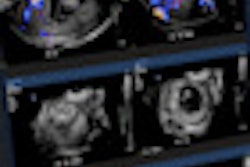
MINNEAPOLIS - 2010 is to business analytics as 1990 was to PACS: two technologies with the potential to revolutionize the operations of imaging departments, each poised for takeoff at the beginning of an era, and each being mentored by the Society for Imaging Informatics in Medicine (SIIM).
SIIM, known in the era of PACS development as the Society for Computer Applications in Radiology (SCAR), deserves more credit than any other professional organization for having the perseverance to champion the evolution of PACS. Now it's focusing on this new technology, announcing its expanded focus in conjunction with its annual meeting being held this week.
A solution to the data deluge
Today, more data are being stored electronically at imaging facilities than ever could have been imagined as being financially or operationally feasible at the dawn of PACS two decades ago. The challenge is how to make sense of all this stored data to improve the process of healthcare delivery. Business analytics offers a solution.
Business analytics is defined as techniques used to interactively explore massive amounts of data to gain insight into past and current performance to help with future strategic planning. Its main advantage is that it enables individuals to interactively generate customized views of archived data geared to answer planned and unpredicted questions.
The complexity of radiology department operations makes medical imaging ideal for adopting a technology that is just now starting to be used in healthcare to analyze performance, improve efficiencies, support quality control, and identify the source of problems to be resolved.
The opening session of SIIM provided a tantalizing look at what is being done at Brigham and Women's Hospital and Massachusetts General Hospital (MGH), two Boston hospitals with reputations as pioneers of imaging informatics.
The problem today
Intelligent assembly and utilization of data offers the flexibility to evaluate data in numerous ways. Right now, however, most radiology departments rely on static reports that may contain errors, or data that generate more questions than answers.
To illustrate the value of business analytics, SIIM speakers used a skit that was familiar to anyone who's worked in a radiology department. A department chairman, pleased that exam volume in the quarter was rising, expressed hope to his colleagues that this trend could increase if a CT suite that he'd often seen idle was better utilized.
To his chagrin, he was told that revenue was plunging, that CT technologists were working at capacity, and that referring physicians were complaining about CT scheduling delays and long report turnaround times. What was happening?
Data from both paper-based and electronic records were presented to an overworked IT analyst, who laboriously produced a report a week later. A mistake in exam volume calculations had been identified. Revenues were indeed plunging, one of three CT scanners was grossly underutilized while the others were operating at 100% utilization, and neuroradiologists had poor report turnaround times. What was causing these problems?
The IT analyst's detail-filled static report offered no solutions. If the department had business analytics, it could have looked at a variety of data, drilling down to find the answers it was seeking. If it had an operations dashboard in place, department staff would have been alerted to any change before it became a problem.
But gathering data is easier said than done, according to Katherine Andriole, PhD, director of the Center for Evidence-Based Imaging at Brigham and Women's Hospital. Data-driven decisions require developing an automated data collection infrastructure using tools to automate the process. As few commercial software solutions have been developed, this is typically an internal effort.
"You start by defining questions you would like to answer and problems you would like to resolve," said Ramin Khorasani, MD, vice chair of radiology and director of medical imaging information technology at Brigham and Women's. "You need to acquire data in a format that can be compared, and you need leadership and stakeholder engagement. Otherwise, you may end up with lots of data that nobody looks at or reacts to."
Khorasani described how in 2008 a small executive team at Brigham and Women's developed five to 10 key performance indicators, focusing on radiologist signature times and critical results communication. By 2009, the scope had expanded to 92 key performance indicators, he said.
The data are displayed on visually customizable dashboards. Twelve of the 92 metrics represent key performance issues relating to quality, safety, and operational efficiency. They evolved internally, including frequency of updates, based on measures of quality, according to Khorasani.
But dashboards and other analytics scorecards are merely IT tools that won't result in sustainable performance improvement without resources to address the process, people, technology, and issues. You need to bundle everything together for performance improvements, Khorasani counseled.
Launching a business analytics program
To launch a business analytics program, you begin with the data. Andriole stressed that this is the foundation of all that follows and the most critical step of the process. Data must be collected from disparate sources that not only include RIS and PACS, but also the electronic medical record, billing, staffing, finance, and an undefined number of other sources. Data must be validated and modified as needed for a normalized environment, and data need to be stored securely in a data warehouse.
Key performance indicators and metrics must be defined. Target measurements identifying norms must be established, as well as controls and measurement processes. Changes will be made. To achieve success, participants must be able to easily use the data -- and must want to use the data. This will define the requirements for data display and how dashboards need to be configured and customized to individuals upon login. The process is not easy.
Who's going to do this? You need to answer this question before you begin, Andriole counseled. You may need dedicated staff. Don't assume that all the work will be done by IT. An independent initiative may be the best approach, but who is going to do the work? Both Andriole and Khorasani warned that substantial resources may be needed, and vendor systems with databases may need to be "hacked."
At this stage in technological development, the process represents a lot of trial and error. But the results can be phenomenal.
Marcus Stout at MGH showed examples of how the hospital's dashboard, named "the Same Page," could be utilized. He stressed that staff would not use a dashboard unless it was useful, but once staff valued what a dashboard offered, it could become a source of empowerment.
He showed a seven-day utilization graph that fills as the week progresses for the numerous facilities located throughout metropolitan Boston that comprise MGH's large imaging department. Users can watch utilization, compare different sites, show scheduling patterns, identify top referrers, evaluate exam times and patient wait periods, and compare their own performance with department norms, goals, and peers.
Stout also suggested that performance targets be continuously raised, noting that if everything meets expectations, there will be little motivation for improvement. Everything today is about volume and efficiency, he said. Business analytics not only maintains performance but improves efficiency.
Business analytics can also be used to make change only where it is needed. When specific radiologists and technologists are not meeting performance requirements, and exceptions are ruled out due to the ability to analyze the data, administrators can communicate directly with individuals rather than sending out a group e-mail. Similarly, exceptional achievers can be recognized.
Business analytics is the way to optimize imaging department performance, the presenters emphasized. Now it is time to work out the details, with the support of SIIM and vendors who have commercialized informatics innovations.
By Cynthia E. Keen
AuntMinnie.com staff writer
June 4, 2010
Related Reading
SIIM opening session highlights advances driving informatics, June 3, 2010
Clario signs CTRM deal, March 1, 2010
Web-based radiology dashboard aids in practice management, December 1, 2008
Exogen navigates healthcare informatics with Blue Ocean launch, June 18, 2008
Copyright © 2010 AuntMinnie.com


















